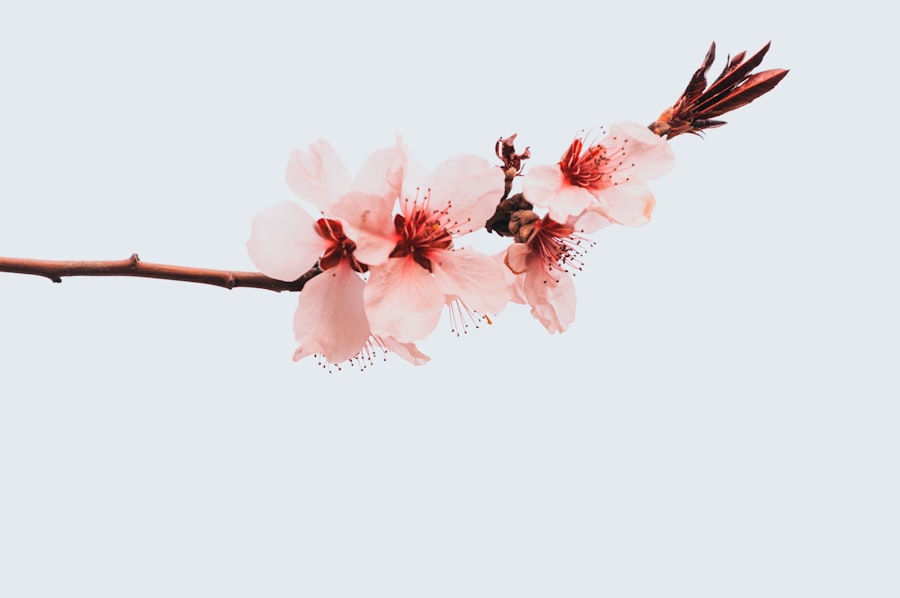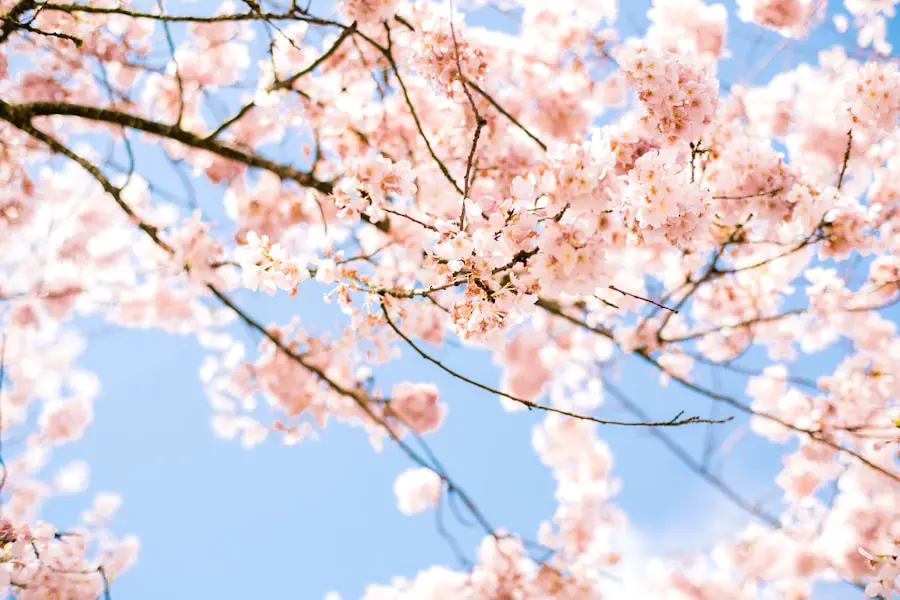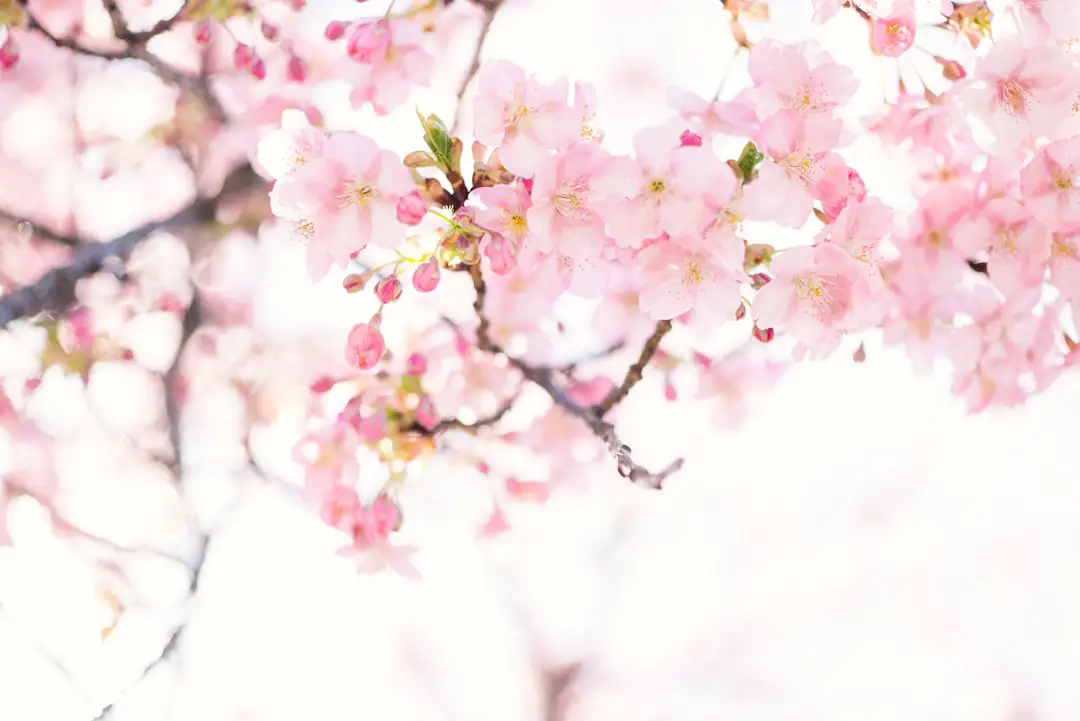Spring in Japan is synonymous with the breathtaking beauty of cherry blossoms, or sakura, which bloom in a spectacular display of pink and white across the country. This ephemeral season typically begins in late March and lasts through early April, depending on the region and climate. The cherry blossom trees, which have been celebrated in Japanese culture for centuries, attract both locals and tourists alike, creating a vibrant atmosphere filled with picnics, festivals, and hanami (flower viewing) parties.
Parks and gardens become the focal points for gatherings, where families and friends come together to appreciate the fleeting beauty of the blossoms while enjoying traditional foods and drinks. The significance of cherry blossoms extends beyond their aesthetic appeal; they symbolize the transient nature of life, a concept deeply rooted in Japanese philosophy. The annual sakura season is marked by various events, including the famous Hanami festivals held in cities like Tokyo, Kyoto, and Osaka.
In Tokyo’s Ueno Park, for instance, thousands of cherry trees line the pathways, creating a stunning canopy of blossoms. Visitors can partake in traditional activities such as writing poetry or enjoying sake under the trees. The cherry blossom season also serves as a reminder of renewal and hope, as it coincides with the start of the school year and fiscal year in Japan, making it a time of new beginnings.
Key Takeaways
- Spring: Cherry Blossom Season
- Cherry blossom season in Japan typically occurs in late March to early April.
- The best places to view cherry blossoms include Tokyo, Kyoto, and Hiroshima.
- Plan your trip in advance to catch the cherry blossoms at their peak bloom.
- Summer: Festivals and Fireworks
- Summer in Japan is filled with lively festivals and spectacular fireworks displays.
- Don’t miss the famous Gion Matsuri in Kyoto and the Sumida River Fireworks Festival in Tokyo.
- Be prepared for hot and humid weather during the summer months.
- Fall: Autumn Foliage
- Autumn foliage in Japan is a sight to behold, with vibrant colors in November.
- Popular spots for viewing autumn foliage include Nikko, Hakone, and the historic city of Nara.
- Consider taking a scenic train ride to fully appreciate the beauty of the fall foliage.
- Winter: Illuminations and Christmas Markets
- Experience the magic of winter in Japan with stunning illuminations and festive Christmas markets.
- Don’t miss the winter illuminations at Nabana no Sato in Mie Prefecture and the German-style Christmas markets in Sapporo.
- Be prepared for cold weather and consider visiting hot springs to warm up.
- Off-Peak Seasons: Avoiding Crowds and Saving Money
- Consider visiting Japan during the off-peak seasons of late winter and early spring to avoid crowds and save money.
- Take advantage of shoulder seasons in April and November for fewer crowds and lower prices on accommodations and attractions.
- Book accommodations and transportation in advance to secure the best deals during off-peak seasons.
- Weather Considerations: Best Times for Outdoor Activities
- Plan outdoor activities in Japan during the spring and autumn months for comfortable weather.
- Be mindful of the rainy season in June and the typhoon season in late summer.
- Check the weather forecast and pack accordingly for outdoor adventures.
- Special Events: Planning Your Trip Around Major Holidays and Events
- Plan your trip around major events such as the New Year’s celebrations, Golden Week in late April to early May, and the Obon festival in August.
- Consider attending traditional events such as tea ceremonies, sumo wrestling tournaments, and kabuki performances.
- Research and book tickets for special events in advance to secure your spot.
- Cultural Considerations: Understanding Japanese Customs and Traditions
- Familiarize yourself with Japanese customs such as bowing, removing shoes indoors, and proper etiquette at temples and shrines.
- Learn about traditional Japanese arts such as tea ceremony, ikebana (flower arranging), and calligraphy.
- Respect local customs and traditions, and be mindful of cultural differences during your visit to Japan.
Summer: Festivals and Fireworks
Summer Festivals: A Celebration of Tradition and Community
Summer festivals, known as matsuri, are held throughout Japan, each with its unique traditions and local flavors. These festivals often feature colorful parades, traditional music, dance performances, and food stalls offering regional delicacies.
Gion Matsuri: A Celebration of Purification and Good Harvests
One of the most famous summer festivals is the Gion Matsuri in Kyoto, which takes place in July and showcases elaborate floats adorned with intricate designs. The festival’s roots date back to the 9th century and is a celebration of purification and good harvests.
Fireworks Displays: A Hallmark of Summer in Japan
Fireworks displays, or hanabi taikai, are another hallmark of summer in Japan. These events draw massive crowds to riversides and parks where spectators can enjoy breathtaking pyrotechnics lighting up the night sky. The Sumida River Fireworks Festival in Tokyo is one of the largest and most popular events, attracting over a million attendees each year. The festival features thousands of fireworks launched from boats on the river, creating a stunning visual spectacle against the backdrop of the city skyline. Attendees often dress in yukata, a traditional summer garment, adding to the festive atmosphere as they enjoy street food like yakitori (grilled chicken skewers) and kakigori (shaved ice).
Fall: Autumn Foliage

As summer gives way to fall, Japan’s landscapes undergo a dramatic transformation as leaves turn vibrant shades of red, orange, and yellow. This seasonal change is celebrated through koyo, or autumn foliage viewing, which attracts nature lovers and photographers eager to capture the stunning vistas. The best time for koyo typically occurs from mid-October to early December, with different regions showcasing their unique foliage at varying times.
Popular spots for viewing include Kyoto’s Arashiyama district, where the iconic Togetsukyo Bridge offers breathtaking views of the surrounding mountains adorned in autumn colors. The cultural significance of autumn foliage extends beyond mere aesthetics; it is also a time for reflection and appreciation of nature’s beauty. Many temples and shrines host special events during this season, inviting visitors to experience traditional tea ceremonies amidst the colorful backdrop. For instance, Kiyomizu-dera Temple in Kyoto offers nighttime illuminations during peak foliage season, allowing guests to witness the temple’s historic architecture framed by brilliantly lit autumn leaves. Additionally, local festivals often coincide with this time of year, featuring seasonal foods such as chestnuts and persimmons that celebrate the harvest.
Winter: Illuminations and Christmas Markets
| City | Illumination Display | Christmas Market |
|---|---|---|
| Paris | Champs-Elysées | Champs-Elysées Market |
| Vienna | Rathausplatz | Rathaus Market |
| Prague | Old Town Square | Old Town Square Market |
Winter in Japan brings a magical atmosphere characterized by dazzling illuminations and festive Christmas markets that light up cities across the nation. From late November through February, urban areas transform into winter wonderlands adorned with millions of LED lights that create stunning displays. Tokyo’s Shinjuku and Shibuya districts are particularly famous for their elaborate light installations that attract both locals and tourists seeking to experience the holiday spirit.
The annual Roppongi Hills illumination is a must-see event, featuring intricate designs that illuminate the skyline against the backdrop of Tokyo Tower. In addition to illuminations, Christmas markets have gained popularity in recent years, offering a taste of European holiday traditions infused with Japanese flair. These markets feature stalls selling handmade crafts, seasonal foods like roasted chestnuts and mulled wine, and festive decorations.
The Sapporo White Illumination is one such event that combines winter illuminations with a Christmas market atmosphere, drawing visitors to Hokkaido’s capital to enjoy both local delicacies and international holiday treats. The blend of cultural influences creates a unique experience that showcases Japan’s ability to embrace global traditions while maintaining its distinct identity.
Off-Peak Seasons: Avoiding Crowds and Saving Money
Traveling to Japan during off-peak seasons can provide a more intimate experience while also offering significant savings on accommodations and attractions. The periods between major holidays or festivals—such as late January to early March or late November to early December—tend to see fewer tourists. During these times, visitors can explore popular destinations like Kyoto or Nara without the usual crowds that characterize peak seasons.
This allows for a more leisurely pace when visiting temples, shrines, and historical sites. In addition to reduced crowds, off-peak travel often means lower prices for flights and hotels. Many accommodations offer discounts during these quieter months to attract guests.
For example, travelers can find deals on ryokan (traditional inns) or hotels that might be fully booked during peak seasons. Additionally, attractions may offer special promotions or reduced entry fees during off-peak times. This not only enhances the travel experience but also allows visitors to allocate their budget towards unique experiences such as guided tours or culinary classes that might be less accessible during busier periods.
Weather Considerations: Best Times for Outdoor Activities

Spring: A Mild and Pleasant Season
Spring is a great time to enjoy outdoor activities in Japan, with mild and pleasant weather conditions. It’s an ideal season for hiking in areas like the Japanese Alps or exploring national parks such as Nikko or Kamikochi. The blooming cherry blossoms also provide a beautiful backdrop for outdoor excursions during this season.
Summer: Hot and Humid, but with Opportunities
Summer can be hot and humid in many parts of Japan, but it’s also a great time for coastal activities such as beach outings in Okinawa or surfing along the Pacific coast. The northern regions like Hokkaido offer cooler temperatures during summer months, making them perfect for hiking or cycling amidst lush landscapes.
Fall: Ideal Weather for Outdoor Activities
Fall presents ideal weather conditions for outdoor activities in Japan, with temperatures cooling down and humidity decreasing. This season is particularly favorable for hiking trails that showcase stunning autumn foliage while providing comfortable conditions for exploration.
Special Events: Planning Your Trip Around Major Holidays and Events
Japan’s calendar is filled with special events that reflect its rich cultural heritage and traditions. Planning a trip around these occasions can enhance the travel experience significantly. For instance, experiencing New Year’s celebrations (Shogatsu) offers insight into Japanese customs such as visiting shrines for Hatsumode (the first shrine visit of the year) or enjoying traditional foods like osechi ryori (New Year’s cuisine).
Many temples hold special ceremonies during this time that attract both locals and tourists. Another notable event is Tanabata (Star Festival), celebrated in July or August depending on the region. This festival commemorates the meeting of two celestial lovers represented by stars; it features colorful decorations made from bamboo and paper strips where people write their wishes.
Participating in local Tanabata festivities provides an opportunity to engage with Japanese culture while enjoying traditional performances and food stalls. Additionally, events like the Sapporo Snow Festival in February showcase stunning ice sculptures and winter activities that draw visitors from around the world.
Cultural Considerations: Understanding Japanese Customs and Traditions
To fully appreciate Japan’s rich cultural landscape, it is essential for travelers to understand its customs and traditions. Respecting local etiquette plays a significant role in fostering positive interactions with locals. For example, bowing is a common greeting that signifies respect; understanding when to bow appropriately can enhance social interactions during your visit.
Additionally, removing shoes before entering homes or certain traditional establishments is customary; travelers should be prepared to follow this practice when invited into private spaces. Dining etiquette also holds great importance in Japanese culture. Familiarizing oneself with practices such as using chopsticks correctly—never sticking them upright in rice or passing food directly from one set of chopsticks to another—can demonstrate respect for local customs.
Furthermore, understanding concepts like omotenashi (hospitality) can enrich interactions with service staff who take pride in providing exceptional service. Engaging with these cultural nuances not only enhances personal experiences but also fosters deeper connections with Japan’s vibrant society.
If you are planning a trip to Tokyo, you may want to consider the best time to visit this vibrant city. According to a recent article on TakeTravelInfo, the best time to travel to Tokyo is during the spring months of March to May when the cherry blossoms are in full bloom. This is a magical time to explore the city and experience the beauty of the cherry blossoms in full bloom.
FAQs
What is the best time to travel to Tokyo?
The best time to travel to Tokyo is during the spring (March to May) and autumn (September to November) when the weather is mild and the city is adorned with beautiful cherry blossoms or colorful autumn foliage.
What is the weather like in Tokyo during the best time to travel?
During the spring and autumn, Tokyo experiences mild temperatures with cherry blossoms in bloom during spring and colorful foliage in autumn. The average temperature ranges from 15°C to 25°C during these seasons.
Are there any specific events or festivals during the best time to travel to Tokyo?
Yes, during the spring, Tokyo hosts the famous cherry blossom festivals and in autumn, there are various events and festivals celebrating the autumn foliage. Additionally, there are traditional cultural events and modern pop culture events happening throughout the year in Tokyo.
Is it crowded during the best time to travel to Tokyo?
Tokyo can be crowded during the cherry blossom season in spring and the autumn foliage season, especially in popular tourist spots and parks. It is advisable to plan and book accommodations and activities in advance during these times.
Are there any specific travel tips for visiting Tokyo during the best time to travel?
It is recommended to book accommodations and transportation in advance, especially during the cherry blossom and autumn foliage seasons. Additionally, it is advisable to check the peak bloom times for cherry blossoms and foliage to plan the visit accordingly.
